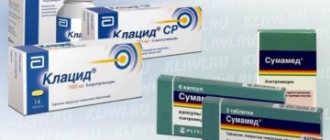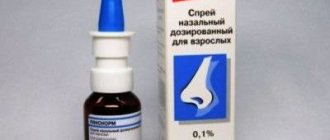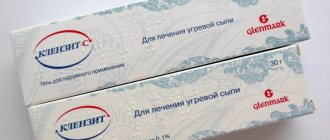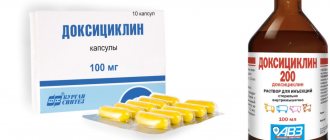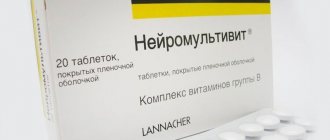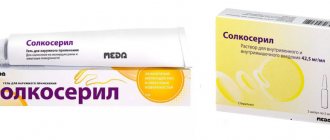| Interferon alpha-2b | |
| Chemical compound | |
| Gross formula | C16H17Cl3I2N3NaO5S |
| CAS | 99210-65-8 |
| PubChem | 71306834 |
| DrugBank | 00105 |
| Classification | |
| ATX | L03AB05 |
| Methods of administration | |
| intramuscular, intravenous injection[d] and subcutaneous injection[d] | |
| Other names | |
| Alfarona, Altevir, Reaferon, Layfferon, Binnoferon Alpha, Interferal, Viferon, Grippferon, Intron® A, Realdiron ... Included in Gerpferon, Genferon, Mikoferon, Allergoferon, Kipferon, Oftalmoferon, ... | |
| Media files on Wikimedia Commons | |
Interferon alfa-2b
is an immunomodulator used in the treatment of hepatitis C, chronic forms of hepatitis B, chronic myeloid leukemia, multiple myeloma, follicular lymphoma, carcinoid tumors and malignant melanoma[1]. Like all interferons, it has pyrogenic properties.
Interferons are produced by body cells to fight infections and tumors, interferon alpha-2b is synthetic[2]. In appearance it is a hygroscopic white powder[3]. It is produced under many commercial names and is part of a number of combination medications.
It is useless in the treatment of colds (mild ARVI) [4], and in oral prophylaxis of influenza with low dosages it also has no effect [5].
Interferon alfa-2b injections can lead to serious side effects, which may include infections, depression, ischemic or autoimmune disorders[1].
Content
- 1 Pharmacological properties of the drug 1.1 Pharmadynamics
- 1.2 Pharmacokinetics
- 3.1 Macular degeneration
- 5.1 Preparations for internal administration
Conditions for dispensing from pharmacies
Requires a prescription.
Is it sold without a prescription?
Dispensed from pharmacies only with a special prescription from the attending physician.
What is the price?
The price of the drug is: for 250 thousand IU - about 450 rubles, 500 thousand IU - 750-850 rubles. and for 1 million IU - 900-1200 rubles. The price is for packs of 5 bottles.
Pharmacological properties of the drug[ | ]
According to the instructions for the drug Binnoferon Alpha
Pharmainamics[ | ]
The activity of interferon alpha-2b is 2.6 ⋅ 10 8 ME {\displaystyle 2{,}6\cdot 10^{8}~{\text{ME}}} (international units) for 1 mg of the drug[6].
Interferon alpha-2b has an antiproliferative effect against human and animal cell cultures, as well as against xenografts of human and animal tumors. In vitro
immunomodulatory activity has been shown[7].
Demonstrated antiviral activity in vitro
and
in vivo
, although its mechanism is unclear - presumably, the drug changes the metabolism of body cells [7].
Pharmacokinetics[ | ]
The pharmacokinetics of interferon alfa-2b were studied in healthy volunteers[7].
The drug was administered subcutaneously (5 and 10 million IU), intramuscularly (5 million IU) and intravenously (5 million IU over 30 minutes). At a dose of 5 million IU, the maximum serum concentration was achieved after 3-12 hours, the half-life was 2-3 hours, the concentration in the blood became below the detection limit after 16 hours. At a dose of 10 million IU subcutaneously, the maximum concentration was 6-8 hours, the half-life was 6-7 hours, not detectable in the blood - 24 hours. When administered intravenously, the maximum concentration was reached at the end of the infusion, quickly decreased, half-life - 2 hours, undetectable 4 hours after the end of the infusion [7].
In clinical studies, the content of antibodies neutralizing the antiviral activity of interferon in blood serum was determined. The frequency of detection of such antibodies was 2.9% in cancer patients and 6.2% in patients with chronic hepatitis. Antibody titers were low, there was no loss of immune response (most likely due to low antibody titers), and no autoimmune reactions were observed[8].
In a clinical study involving 670 pregnant women with infectious inflammatory diseases, Viferon rectal suppositories containing 150,000 IU and 500,000 IU alpha-2 interferon were used, and an increase in the concentration of serum interferon was found within 12 hours after administration of the first dose with a tendency to decrease it concentrations in the next 12 hours. 4 hours after administration of the first dose of the drug, a decrease in the concentration of interferon in the blood serum was observed, followed by an increase. The authors suggested that this indicates stimulation of the body’s production of its own interferon under the influence of the drug [9].
Pharmacodynamics
The medicine is intended for oral administration.
The active substance is human recombinant interferon. It is produced by special cells of Escherichia coli. Interferon is represented by a specific protein structure, which contains 165 essential amino acids.
The antiviral effect of the drug is ensured by the direct participation of the active substance in the metabolic cellular processes that occur at the time of virus reproduction. Interferon quickly binds to surface membrane receptors and contributes to various intracellular disorders. The formation of viral RNA is prevented by specific cytokines and enzymes.
The medicine is intended for oral administration.
The immunomodulatory effect is manifested in disturbances in the processes of secretion of proteins found in pathogenic cells. The composition of cytokines also changes. The phagocytic activity of isoenzymes and macrophages increases significantly.
Efficiency[ | ]
| This section is not completed. You will help the project by correcting and expanding it. |
Macular degeneration[ | ]
Interferon alfa-2a is not effective in the treatment of neovascular age-related macular degeneration (macular degeneration). The harm from such treatment outweighs the benefits[10].
COVID-19[ | ]
In a single-arm study, experimental interferon alfa-2b treatment reduced viral load in the upper respiratory tract and also resulted in a decrease in the duration of elevated interleukin-6 and C-reactive protein levels in the blood. However, additional research is required to confirm the data[11].
special instructions
For diseases of the thyroid gland, the use of the drug must be carried out under the supervision of an endocrinologist. If symptoms of thyroid dysfunction appear during therapy, then in such cases it is necessary to control the level of thyroid-stimulating hormone.
Patients who experience drowsiness, disorientation or fatigue during treatment should refrain from driving or engaging in potentially hazardous activities that require rapid psychomotor reactions and increased concentration.
Alternative uses of interferon alfa-2b[ | ]
In Russia and the CIS, many interferon-containing products are produced for topical use with indications for the treatment of diseases of a viral and bacterial nature: Viferon®, Grippferon®, Gerpferon®, Oftalmoferon®, Reaferon-Lipint®, Genferon® Light, etc.[12]
Such drugs are advertised without evidence, in particular, for use against colds and flu. WHO emphasizes that there are neither high-quality clinical studies of the effectiveness nor systematic observations of the topical use of interferons for influenza[13].
In experiments using interferon alpha-2b
for natural and induced colds, researchers came to the conclusion that there was no therapeutic effect [4]. One study of the use of a nasal spray with recombinant interferon alpha-2b showed that it was not only ineffective in treating colds, but was toxic and increased the chances of developing a secondary infection[14].
Indications and contraindications
The drug is used in complex treatment among adults and children. Prescribed by doctors for solid tumors, oncology, infections, neoplasms of the hematopoietic and lymphatic systems, atopic and skin diseases:
- hepatitis B, C, D;
- meningoencephalitis: mycoplasma, viral-bacterial, viral;
- keratitis;
conjunctivitis caused by viruses;
- stage four kidney cancer;
- skin lymphomas (malignant);
- skin cancer;
- Kaposi's sarcoma;
- hairy cell leukemia;
- keratoacanthoma;
- laryngeal papillomatosis;
- multiple sclerosis;
- tick-borne encephalitis;
- urogenital chlamydial infection.
Sometimes Reaferon is also used to treat minors. The instructions provide for indications for use such as laryngeal papillomatosis (after removal of tumors) and the post-remission period for leukemia.
The drug is rarely used in the treatment of children or minors (only as prescribed and under medical supervision), and is also incompatible with lactation - breastfeeding must be discontinued during the course of treatment . Strict contraindications include the following factors:
- heart diseases;
- dysfunction of the liver and kidneys;
- seizures and epilepsy;
- tendency to depression and suicide, as well as dysfunction of the central nervous system;
- myeloid leukemia;
- hypersensitivity to interferon (recombinant);
- severe forms of allergies;
- pregnancy;
- cirrhosis of the liver.
Medicines[ | ]
Preparations for internal administration[ | ]
Interferon alpha-2b preparations intended for intramuscular, subcutaneous and intravenous administration (“Binnoferon Alfa”, “Laifferon”, “Reaferon EC”, etc.) are intended for the treatment of viral hepatitis and oncological diseases[6][3][15] .
Viferon[ | ]
"Viferon" was developed in the 1990s at the Research Institute of Epidemiology and Microbiology named after. N.F. Gamaleya group led by prof. Valentina Malinovskaya. In 1996, Malinovskaya, together with her husband Evgeny Malinovsky (prof., Honored Worker of Science and Technology of the RSFSR, in 1991 was an employee of the NPO Construction and Road Engineering [16]), created Feron LLC with production based on the Research Institute of Virology [17] . In 1998, the drug was registered in Russia (form of release: rectal suppositories)[18]. In 2011, the drug was included in the List of vital and essential drugs of the Russian Federation for 2012 with om L03AB (interferons)[19].
In 2011, the revenue of the manufacturing company amounted to 2 billion rubles[17]. From 2014 to 2020, sales of Viferon increased one and a half times, the brand became seventeenth in terms of sales value[20]. Also in 2020, it was in 7th place among the best-selling drugs in Kazakhstan[21]. In 2020, the drug received the Russian Pharma Awards® (this private award is awarded based on the results of a survey of doctors [22]), taking first place in the category “The most prescribed antiviral drug for the treatment of ARVI for children from the first days of life” [23].
The manufacturer indicated in the instructions that the drug has antiviral, immunomodulatory, antiproliferative properties, suppresses the replication of RNA and DNA viruses, and that it is indicated for the treatment and prevention of acute respiratory viral infections, laryngotracheobronchitis and several herpetic infections [24].
Outside the CIS, Viferon is not approved for use (not registered). There are no publications in reputable international scientific journals proving its effectiveness. In Russia, all clinical studies were conducted in Moscow hospitals and at the Research Institute of Pediatrics of the Russian Academy of Medical Sciences. The head of the drug development group, Valentina Malinovskaya, took part in many studies [17].
Grippferon[ | ]
Doctor of Medicine, specialist in reflexology and acupuncture Pyotr Gaponyuk patented “Grippferon” in 2000. The drug was praised by the head of Rospotrebnadzor Gennady Onishchenko. CJSC FIRN M, created by Gaponyuk in 1989 and owned by members of his family, produces Grippferon ointment[17].
Grippferon is common in Russia and Belarus. There are no publications on his research in international peer-reviewed journals. The manufacturer claims that clinical and experimental studies of Grippferon were carried out in 14 research and clinical centers in Russia and Ukraine. However, they are not independent; the inventor of Grippferon, Pyotr Gaponyuk, participated in some of the research, and it was carried out by the departmental institute of Rospotrebnadzor. No independent studies have been conducted[17].
In February 2020, sales of Grippferon increased by 76%[20].
Oftalmoferon[ | ]
Eye drops based on recombinant human interferon alpha-2b and Diphenhydramine (diphenhydramine)[25]. “Ophthalmoferon” is produced by JSC “FIRN M” of the family of Peter Gaponyuk, who patented “Grippferon”[17].
According to the instructions, “Ophthalmoferon” has a wide spectrum of antiviral activity, has immunomodulatory, antiproliferative, antiallergic effects, reduces itching and swelling of the conjunctiva [26].
The instructions also indicate the absence of both side effects and information about overdose. It is noted that the drug does not penetrate into the blood (“below the detection limit”), and it is unknown whether the components of the drug penetrate into the eye tissue (“there is no information on the degree of penetration… into the eye tissue…”)[26].
Side effects of Reaferon
During therapy with the drug, side effects indicated in the instructions may develop:
- myocardial infarction, arrhythmia, arterial hypotension, cardiomyopathy;
- hepatotoxicity, dry mouth, pancreatitis, nausea, diarrhea, abdominal pain, weight loss, loss of appetite, vomiting, dyspepsia, jaundice;
- psychosis, irritability, neuropathy, nervousness, aggressiveness, depression, suicidal thoughts, asthenia, anxiety, insomnia;
- hair loss, skin rashes, increased sweating, itching;
- diabetes;
- hyperthrombocytosis, histiocytosis, thrombocytopenia;
- leukopenia, anemia, increased concentration of urea, creatinine;
- myalgia, rhabdomyolysis, myositis, convulsions;
- pneumonia, pharyngitis, dyspnea, cough;
- renal failure;
- sclerosis;
- inflammation of the follicles;
- anaphylaxis, vasculitis, rheumatoid arthritis;
- hyperemia of the mucous membrane of the eyes, swelling of the conjunctiva;
- hearing impairment.
Immunotherapy, like other melanoma treatment options, is not without side effects. They are especially evident when high doses of Interferon are prescribed - the drug has a toxic effect on all organs. Not only this drug, but also other immunotherapy drugs have side effects on organs and systems:
- General reactions in the form of headache, weakness, fever, weight loss.
- The reaction from the gastrointestinal tract can manifest itself in the form of nausea, vomiting, abdominal pain and diarrhea.
- The musculoskeletal system reacts to the drug with pain in the bones and muscles.
- From the central nervous system, irritability, depression, insomnia, decreased concentration and tearfulness were noted.
- The skin may react with an itchy rash. There may also be general dry skin and limited hair loss.
When using Interferon at a dose of up to 100 million MN per square meter of the human body, fever, headache, muscle pain and general weakness were most often observed. 72 hours after the last administration of the drug, the body temperature returned to normal and the general condition improved.
Treatment of melanoma with interferon has its positive and negative sides, but according to statistics, such therapy increases the life expectancy of patients with melanoma.
Notes[ | ]
- ↑ 1 2
Interferon Alfa-2b Injection
(unspecified)
.
MedlinePlus
. US National Library of Medicine (September 15, 2015). - Interferon Alfa-2b (Injection Route) (undefined)
.
Drugs and Supplements
. Mayo Clinic (February 1, 2020). Retrieved April 13, 2020. - ↑ 12
Laifferon, instructions, 2012. - ↑ 1 2 Mossad, SB
Treatment of the common cold: [English] // BMJ (Clinical Research ed.). - 1998. - Vol. 317, no. 7150 (July). — P. 33–36. — ISSN 0959-8138. - doi:10.1136/bmj.317.7150.33. - PMID 9651268. - PMC 1113448. - Bennett, AL
Low-dose oral interferon alpha as prophylaxis against viral respiratory illness: a double-blind, parallel controlled trial during an influenza pandemic year: [English] / AL Bennett, DW Smith, MJ Cummins ... [et al.] / / Influenza Other Respir Viruses. — 2013. — Vol. 7, no. 5 (February). — P. 854–862. — ISSN 1750-2659. - doi:10.1111/irv.12094. - PMID 23398960. - PMC 5781220. - ↑ 12
Binnoferon Alpha, instructions, 2020. - ↑ 1234
Binnoferon Alpha, instructions, 2020, p. 4. - ↑ 12
Binnoferon Alpha, instructions, 2020, p. 5. - Tkacheva et al., 1999.
- Reddy, U.
Antiangiogenic therapy with interferon alfa for neovascular age-related macular degeneration: [English] / U. Reddy, M. Kryzstolik // Cochrane Database of Systematic Reviews. - 2006. - Vol. 1 (25 January). - CD005138. - doi:10.1002/14651858.CD005138.pub2. - PMID 16437522. - Qiong Zhou, Virginia Chen, Casey P. Shannon, Xiao-Shan Wei, Xuan Xiang.
Interferon-α2b Treatment for COVID-19 (English) // Frontiers in Immunology. - 2020. - T. 11. - ISSN 1664-3224. - doi:10.3389/fimmu.2020.01061. - Interferon Alpha-2b (Interferon alpha-2b). Single-component preparations (undefined)
. Directory Vidal “Medicines in Russia”. - WHO, 2009: “Therefore, whether immunomodulators such as interferons are useful as an adjunctive therapy is uncertain... There are no published clinical randomized controlled trials or observational studies of current intranasal interferon preparations for the treatment of influenza.”
- Hayden, FG
Intranasal recombinant alfa-2b interferon treatment of naturally occurring common colds: [English] / FG Hayden, DL Kaiser, JK Albrecht // Antimicrobial Agents and Chemotherapy. - 1988. - T. 32 (February). — P. 224–230. — ISSN 0066-4804. - PMID 2834996. - PMC 172139/. - Reaferon-EU, instructions, 2014.
- On conferring the honorary title “Honored Worker of Science and Technology of the RSFSR”: Decree of the President of the RSFSR / President of the RSFSR B. Yeltsin. - 1991. - November 28.
- ↑ 123456
Golunov, 2013. - Kolobukhina, L.V.
Viferon in the treatment and prevention of acute respiratory viral infections // Russian Medical Journal. - 2003. - No. 5 (March 6). — P. 306. - Appendix: List of vital and essential drugs for 2012 // Order of the Government of the Russian Federation of December 7, 2011 N 2199-r: On approval of the list of vital and essential drugs for 2012.
- ↑ 12
Pharmaceutical market of Russia. - M.: DSM Group, 2020. - Issue. February 2020. - When will inexpensive, high-quality medicines appear in Kazakhstan (Russian). Forbes Kazakhstan
(July 3, 2015). Retrieved August 1, 2020. - Russian Pharma Awards®. Oscar for Medicine® (Russian). Russian Pharma Awards
. Retrieved January 24, 2020. - Oscar for medicine: how the Russian Pharma Awards 2020 went. Press release (Russian). Vesti Medicine (November 15, 2019). Retrieved January 24, 2020.
- Viferon, instructions, 2020.
- RU No. 002902/01.
- ↑ 12
Oftalmoferon, instructions, 2012.
Literature[ | ]
Sources
- Nagata S., Taira H., Hall A., et al.
Synthesis in E. coli of a polypeptide with human leukocyte interferon activity (English) // Nature: journal. - 1980. - March (vol. 284, no. 5754). - P. 316-320. - doi:10.1038/284316a0. - PMID 6987533. - 1.8. Other products // WHO Pharmacological Management of Pandemic Influenza A (H1N1) 2009 Part II: Review of Evidence: [English]. — Revised February 2010. — Geneva: World Health Organization, 2010. — P. 21. — 61 p.
- Osterlund, P.
Pandemic H1N1 2009 influenza A virus induces weak cytokine responses in human macrophages and dendritic cells and is highly sensitive to the antiviral actions of interferons: [English] / P. Osterlund, J. Pirhonen, N. Ikonen … [et al.] // Journal of Virol. - 2010. - Vol. 84, no. 3. - P. 1414–1422. - doi:10.1128/JVI.01619-09. - PMID 19939920. - PMC 2812319. - Woo, PC
Cytokine profiles induced by the novel swine-origin influenza A/H1N1 virus: implications for treatment strategies. : [English] / PC Woo, ET Tung, KH Chan ... [et al.] // Journal of Infectious Diseases. - 2010. - Vol. 201, no. 3. - P. 346–353. - doi:10.1086/649785.. - PMID 20030555.
Official documents
- Register entry FS-001808 (Russian). State register of medicines
. Ministry of Health of the Russian Federation (September 25, 2018). Retrieved July 31, 2019. - Registration certificate P N002902/01 (Russian). State register of medicines
. Ministry of Health of the Russian Federation (October 6, 2008). Retrieved August 2, 2019. - Registration certificate P N001142/02 (Russian). State register of medicines
. Ministry of Health of the Russian Federation (April 13, 2010). Retrieved August 2, 2019. - Gordeeva, N. G.
Instructions for medical use of the drug Binnoferon Alfa®: Registration number LP-004881 / Binnopharm JSC. — Ministry of Health of the Russian Federation, 2018. — June 5. — 32 s. - Kirillov, N. E.
Instructions for medical use of the drug Ophthalmoferon®: Registration number LP-002902 / CJSC "FIRN M". - Ministry of Health of the Russian Federation, 2012. - February 24. — 4 s. - Malinovsky, E. U.
Instructions for medical use of the drug Viferon®: Registration number 001142/02 / Feron LLC. — Ministry of Health of the Russian Federation, 2020. — October 25. — 5 s. - Gutova, E. A.
Instructions for medical use of the drug Laifferon®: LS-001989-180512 / Vector-Medica CJSC. - Ministry of Health and Social Development of the Russian Federation, 2012. - May 18. — 6 s. - Gutova, E. A.
Instructions for the medical use of the drug Reaferon-EC: P #000642/01-280414 / Vector-Medica CJSC. - Ministry of Health of the Russian Federation, 2014. - April 28. — 12 s.
Publications in Russian
- Ershov, Felix Ivanovich.
The interferon system is normal and in pathology / Ros. acad. honey. nauk.. - M.: Medicine, 1996. - 238, [1] p. — ISBN 5-225-02863-2. - Moskovskaya, I. A.
Algorithm for the prevention of vertical transmission and implementation of perinatal viral infection of hepatitis C and B viruses // Viral hepatitis in the Russian Federation: reference book / I. A. Moskovskaya, G. E. Kholodnyak, N. V. Rybakova. - St. Petersburg. : FGUN NIIEM im. Pasteur Rospotrebnadzor, 2010. - 203, [1] p. : ill. — ISBN 978-5-904405-13-7. - Tkacheva, I. I.
Rational methods of prevention and treatment of infectious and inflammatory diseases of the mother of the fetus and newborn in obstetric and extragenital pathology: [arch. August 18, 2019] / I. I. Tkacheva, T. G. Tareeva, A. V. Fedotova... [etc.] // Bulletin of the Russian Association of Obstetricians and Gynecologists: journal. - 1999. - No. 3.


